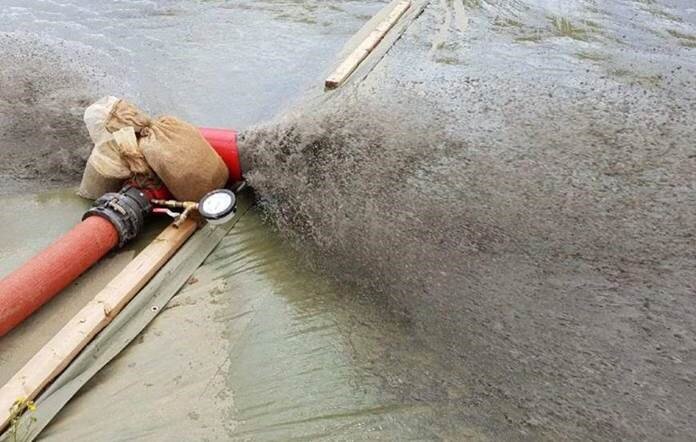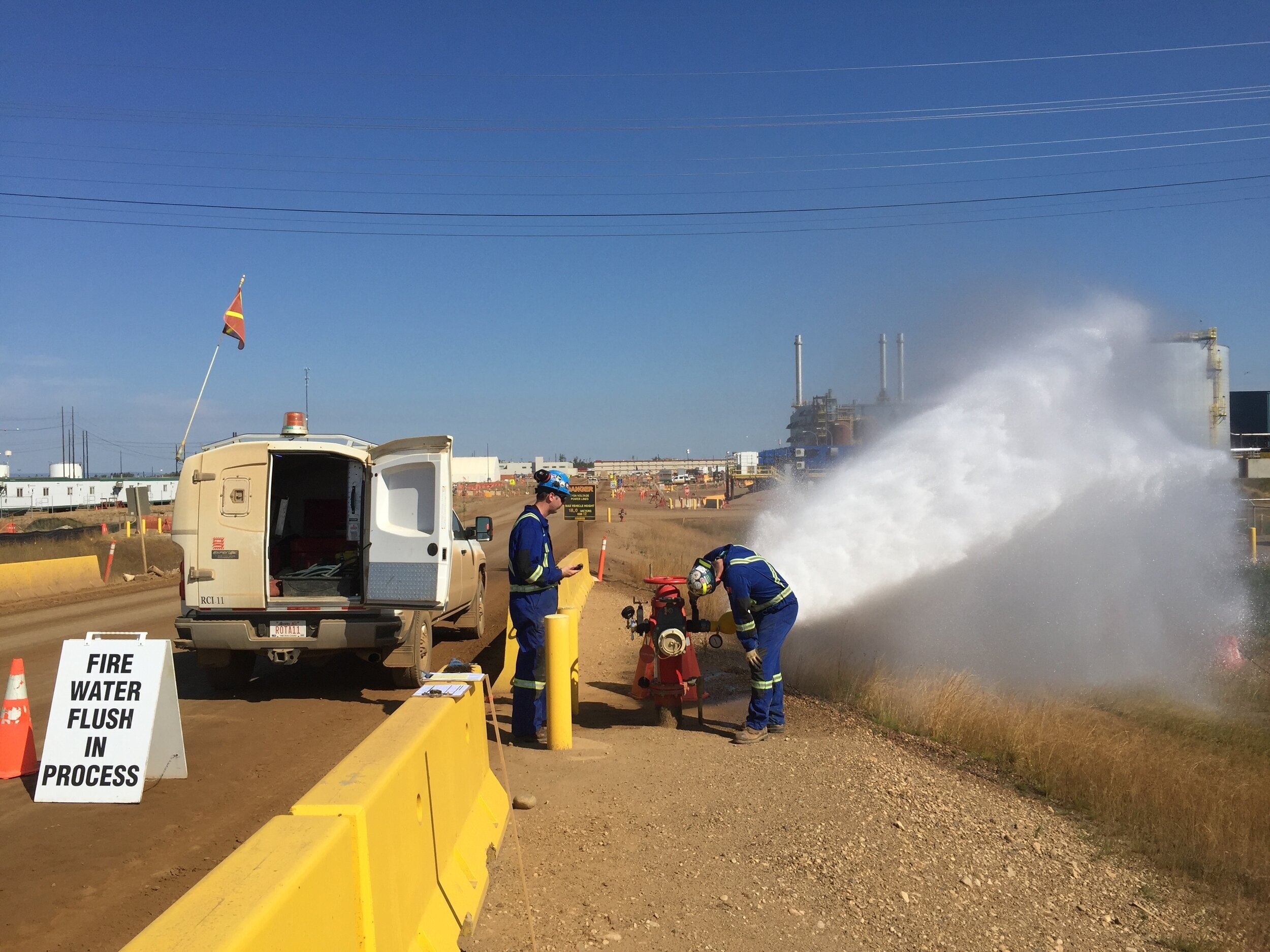It was the same time last year that we received a phone call from an Oil & Gas upstream facility project engineer. He was told that the underground fire water system at their site had not been tested in years and was wondering whether the underground piping required flushing or flow testing to comply with Alberta Fire code and applicable NFPA Standards.
Now, Let’s take a quick look at these two terms and the difference between them:
Flushing:
The exercise of removing foreign material that is obstructing the path of water through fire water service mains (rocks, wood, construction debris, etc.) by passing water at a given velocity through piping. Flushing exercise should cover all the piping from water supply to any system riser and should continue until clear water is being discharged from the flushing hydrant or the flushing connection. If not performed, it can potentially lead to a catastrophic failure of the fire system in the event of an actual fire as major obstructions could prevent or limit water from reaching discharge devices (hydrants, firefighting monitors, sprinkler nozzles, etc.).
Flow Testing:
The exercise is to evaluate the availability of firewater across various locations at site. The selected flowing hydrant(s) can be ideally the most hydraulically remote ones from the water source. The goal of this exercise is to ensure those system design requirements (such as minimum discharge flow and pressure) are still met at any given point across the system. Conducting a flow test helps the site managers to know about any possible deficiencies in the system. Corrective actions should be taken to fix those deficiencies and to get rid of any flow restriction in the system based on the findings of this test.

Underground Firewater Flushing using a hose monster connection – Take note of Muddy water carrying all debris out of piping. Sand tarps are typically used to secure the hose monster during high volume flushing exercises.
As the objective of these two exercises are varied, so does the procedure and frequency of performing those activities. As per “NFPA 24, “Standard for the Installation of Private Fire Service Mains and Their Appurtenances”, underground fire water mains need to be flushed as part of system commissioning activities. The flushing exercise shall be repeated post commissioning if an obstruction investigation indicates the presence of sufficient foreign material to obstruct pipe or sprinklers (NFPA 25 “Standard for the Inspection, Testing, and Maintenance of Water-Based Fire Protection Systems”, 14.3.3). In contrast, as per NFPA 25, 2019, 7.3.1. underground and exposed piping shall be flow tested every 5 years.
Now, let’s look at the difference between flushing and flow testing procedures. Since the focus of flushing exercise is to ensure that fire water mains are clean and free of debris, following points should be considered while conducting this exercise:
Flushing
- Water should reach 10 ft/s velocity in any pipe segment that needs to be flushed (except for fire pump suction piping that needs to be flushed at 15 ft/s as per NFPA 20 “Standard for the Installation of Stationary Pumps for Fire Protection”, 2019, A.14.1.1). This is mainly to ensure that water velocity is high enough to remove any objects that is obstructing passage of water. Required water flow rate that needs to be provided by fire water pump(s) should be calculated based on this velocity.
- Position of system post-indicator valves should be arranged in such a way that no cross-contamination between flushed pipe segments and other segments of the pipe network occurs. PIVs alignment also helps to prevent any incident involving unplanned release of water through any openings in the system.
- System overall pressure loss should also be minimized by choosing the least resistant flush path and an adequate number of flushing hydrants.
Flow Test
During flow testing exercise, the fire system rated capacity should be reached while discharging water through the selected flowing hydrant(s). For example, if the fire system is designed to provide 5000 gallons per minute at the worst-case fire scenario, the goal of flow testing of the system is to ensure that this flow rate can be achieved while discharging water through the flowing hydrants (the exact number of hydrants to be flown will be determined based on the size of the system). A minimum residual pressure of 20 psi is recommended be maintained at flowing hydrant while conducting this test (NFPA 291 “Recommended Practice for Fire Flow Testing and Marking of Hydrants”, 2019, 4.1.3). This is mainly to ensure that negative pressure condition is not going to occur in the firewater system during discharge. The determination of system-rated capacity based on the worst fire case scenario is an engineering exercise that we will cover in a separate post.
As a side note, it should be cautioned not to confuse individual hydrants testing that must be completed annually with two above exercises. The intent of hydrant testing is just to check the functionality and reliability of individual hydrants on the system. Hydrant annual testing involved fully opening each hydrant and flow water until it becomes clear of any foreign object.
The firewater system that we received the inquiry for, was not flow tested in five years. As per client request, Rotaflow performed flow testing at the three most remote hydrants to ensure that the hydraulic demand of the system can be met while extinguishing fire. We also tested each individual hydrant to confirm the operability and reliability of all hydrants. Finally, we provided client with a comprehensive report on system performance and deficiencies (To request an example of a firewater system testing report click here).
If you are looking for an experienced team of engineers and sprinkler fitters to look after maintenance needs of fire water system at your site or need support for ongoing maintenance of your system, feel free to contact us for a free consultation.
By: Ali Khakbazan, M.Sc., CFPS, Fire SCO.



